'It is a crisis': County pet shelters over capacity as rising costs push people to surrender animals
Pinched to their limits by increased costs for food, gas and housing, people across Palm Beach County are giving up their pets, creating a crowding crisis at Palm Beach County Animal Care and Control and other shelters.
“People are at a breaking point, and it’s not their fault. They are in tears when they are giving up their pets,” said Jan Steele, the shelter’s director, who said the trend began in March.
On a recent Tuesday, 19 dogs, seven cats and one raccoon were surrendered at the facility on Belvedere Road near West Palm Beach. Some days, it is as many as 30 pets.
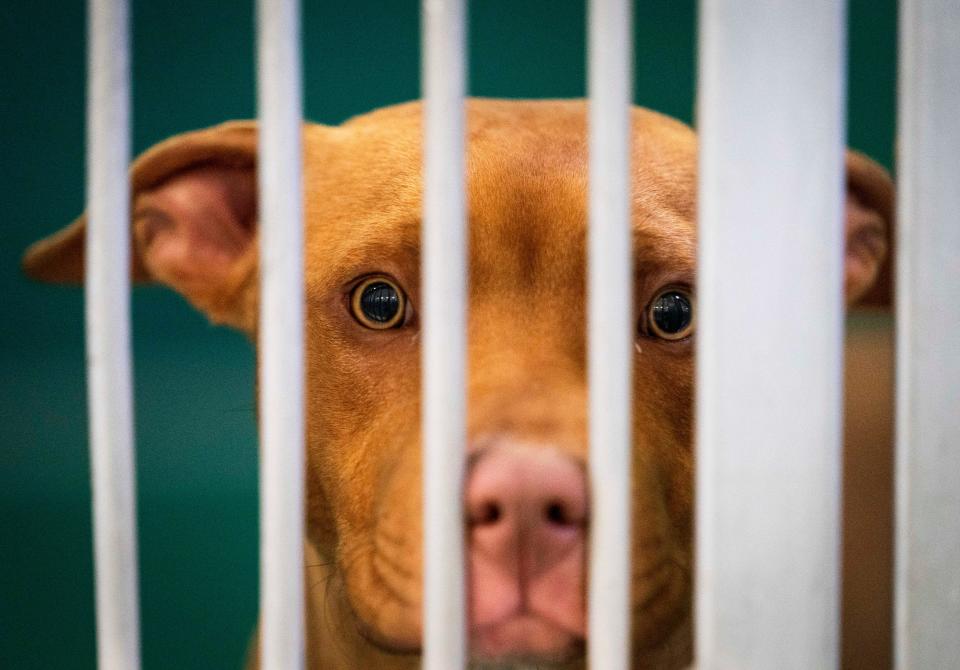
The shelter, Steele said, is “maxed out" on its “capacity for care” and has lowered its adoption fee to $14 during February.
“It is not just about space, but it is also about, ‘Do I have staff and facilities to cover everything?’ ” Steele said. “We deal with at-risk animals. We want to be able to provide humane care.
“Our surrenders have increased. Rescues are at capacity. Adoptions are down. The animals coming to us are in much worse condition. It is a crisis. That is why we desperately need the community to help,” Steele said.
Want to adopt a pet?Need to surrender one? Seven things to know.
Inflation:How much more are you spending for that breakfast these days?
Hard times for retailer:Bed, Bath & Beyond to close four Palm Beach County stores as company faces bankruptcy
Nearly 50 dogs per month surrendered at county shelter during 2022
Steele blamed the uptick in relinquishments on the rising price of daily living. Those on tight budgets can no longer afford to feed and care for their animals.
Some are paying higher rents or may have been evicted as their rents were raised and they are unable to find pet-friendly housing. They cannot afford veterinary services. Those working multiple jobs no longer have time for a pet.
The numbers are stark, especially for dogs.
In 2021, Animal Care and Control received 491 owner-surrendered dogs. In 2022 that rose to 584, or nearly 50 per month.
The facility has 144 regular kennels, and additional kennels for isolating sick dogs and those undergoing hospitalization and treatment. Since March, the number of dogs it houses has consistently reached 185 to 200.
This has resulted in dogs doubling up in kennels and being given less space. Steele said a 100-dog maximum would be ideal.
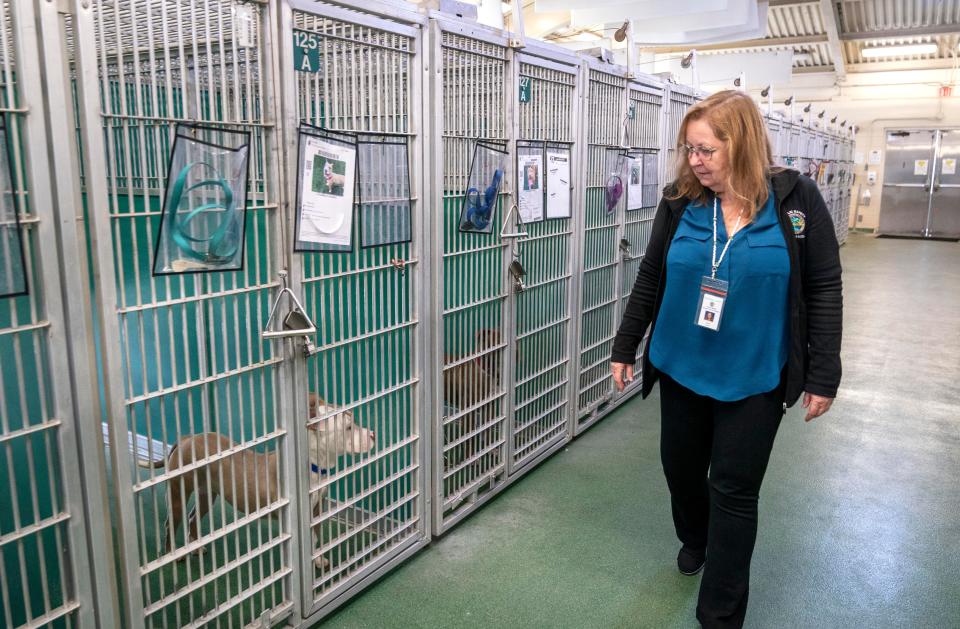
An increase in animal diseases — distemper, parvovirus and pneumovirus — has exacerbated the problem. Pneumovirus is fairly new and has no vaccine. The respiratory virus spreads quickly: The more the dogs bark, the more it spreads. The county had to convert one kennel into a disease ward, Steele said.
Steele and others who run pet shelters said the crisis is not linked to people who worked from home and adopted dogs during the pandemic. Those are not the people giving up their pets.
“Those people are still making money. The ones who had a problem were the ones working at entry-level jobs or lower-paying jobs,” Steele said.
'No-kill' status would mean about 400 fewer pets are killed each year
When Steele started as director a little over a year ago, her goal was a release rate of 90% or better. A 92% release rate means that if 100 animals are coming into the shelter, 92 are released to a home or a rescue, and eight are euthanized.
“We had gotten to the point where the release rate was 92%,” Steele said. “During COVID, we were able to clear out one kennel completely.”
However, from the start of the fiscal year Oct. 1, 2022, to Jan. 24 of this year, the release rates were 86% for dogs and 82% for cats. The releases included 1,102 dogs and 1,185 cats. A total of 171 dogs and 243 cats were euthanized.
“My goal when I started last year was to turn our shelter into a no-kill shelter. You need to be saving 90% of every species that comes through. I was heartbroken when the live release rate went down to 82%,” Steele said.
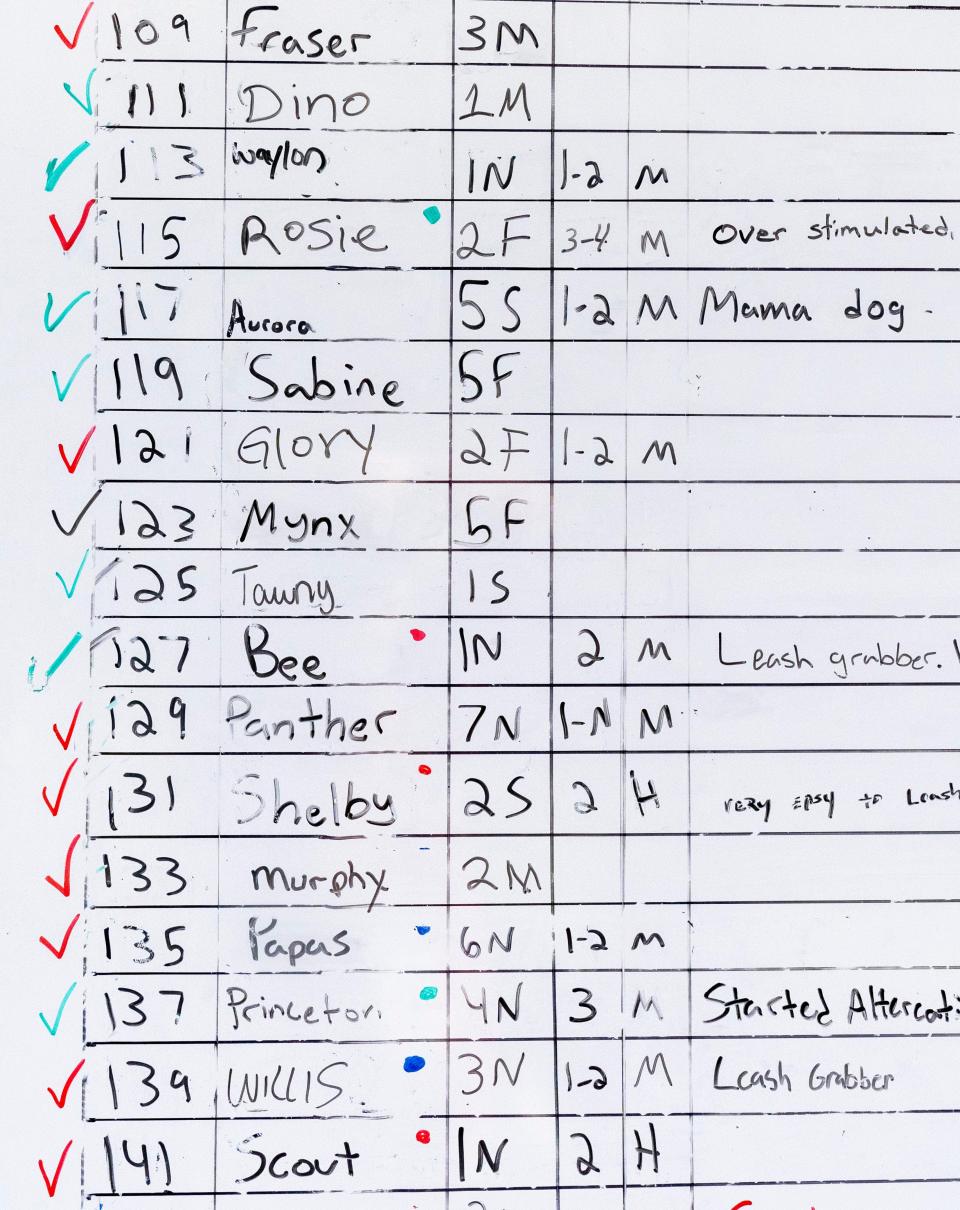
In 2022, Animal Care and Control took in 3,768 dogs and 381 were euthanized. The shelter received 4,701 cats and euthanized 826. To reach no-kill status, the shelter would have had to euthanize 361 fewer animals.
“To me it seems if the community banded together, we should be able to find homes for another 400 animals each year,” Steele said, based on the county’s population of more than 1.5 million.
Florida has one of nation's highest pet euthanization rates
At 7.1%, Florida has the nation’s fourth-highest rate of euthanasia deaths at animal shelters, according to the nonprofit Best Friends Animal Society. In 2021, 318,834 cats and dogs entered Florida shelters, and 22,616 were killed.
In Palm Beach County, the rate is 9.5%, Best Friends data shows. Its six no-kill shelters and the county took in 24,846 dogs and cats, released 22,354 and euthanized 2,132.
During COVID, the average length of stay for dogs was 13.46 days and 7.66 for cats. The average length of stay now is 18.97 and 11.73 days, respectively. With strays, it can take six days before they are available for adoption while the animals are brought up to date on vaccinations and spayed or neutered.
The shelter’s cat population stood at 45 on a recent weekday, and about 75 cats can be accommodated. Steele believes the cat numbers are down because people are looking for smaller animals with lower care costs.
Animal Care and Control is trying to govern this crowding with only two-thirds of its staff positions filled. That means it’s only able to cover feedings and cleanings. In all, 20 positions are open, including two veterinarians, Steele said. Volunteers worked 9,000 hours during 2022.
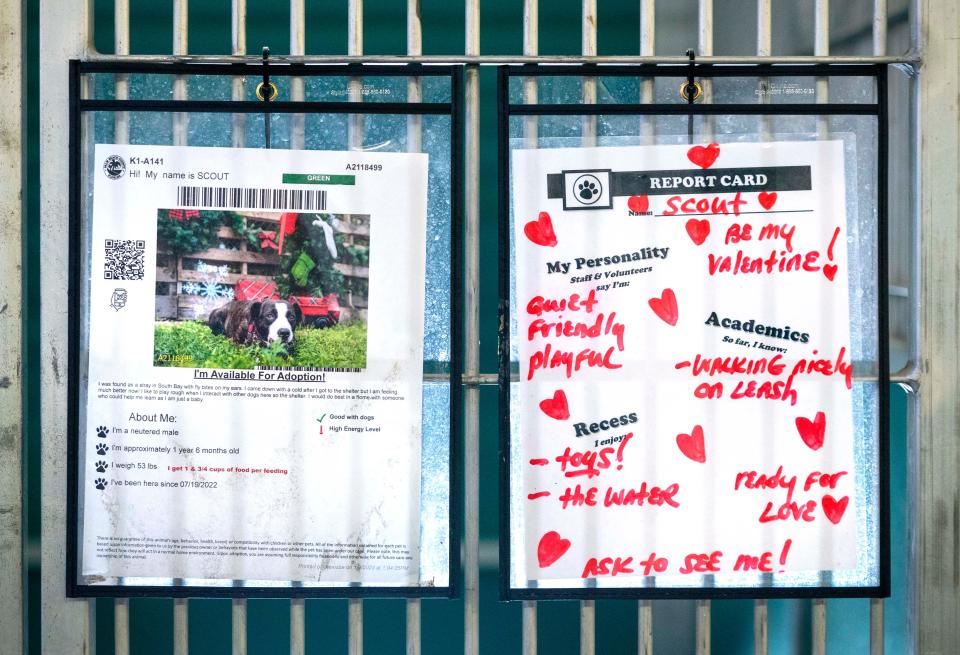
Animal shelters nationwide seeing shortage of pet adoptions
Animal Care and Control works with 68 rescue groups and shelters in Florida and other states to get as many animals out of its facility as possible. Rescues that once picked up eight or 10 animals now only have room for one or two, said Steele, who noted Hurricane Ian filled many of those facilities.
Sue Berry, the CEO of the Peggy Adams Animal Rescue League in West Palm Beach, said dogs are staying an average of 16 to 20 days, but some stay for months. Five or six days would be a normal turnaround. In 2022, the league admitted 6,148 animals and adopted out 5,258. In 2021, it took in more than 7,000 animals and adopted out more than 6,000.
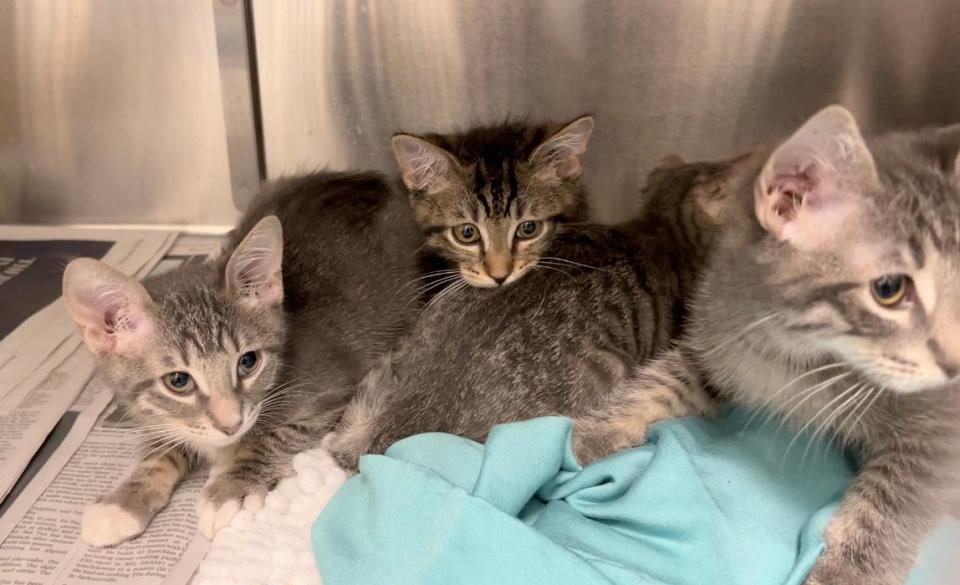
“With the economy’s impact, people are more likely to have to give up their pets. They are losing their housing and cannot afford it, or it’s the care they cannot afford. There are fewer people adopting. It really is reaching a boiling point. We see it everywhere,” Berry said.
Shelters and rescues nationwide are seeing the same problem, Berry said: “Adoptions are down 4% nationally, and that is what we are seeing.”
The league has “intake prevention” programs to help those who are struggling financially to care for their pets, including a food pantry and help with medical expenses.
“We want to help a family or person keep their pet,” Berry said.
Steele envisions starting an effort called Pawsitive Community next year. Law enforcement, health and human services, animal shelters and rescues would work to provide the services people need in instances of mental illness, spousal abuse or neglect so they can take care of their pets.
“It’s the only way we are going to get out of this. We can’t adopt our way out of it. We can’t spay and neuter our way out of it,” Steele said.
This article originally appeared on Palm Beach Post: Palm Beach County animal shelters 'in crisis' as people give up pets

